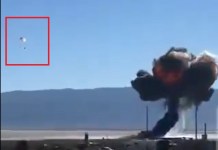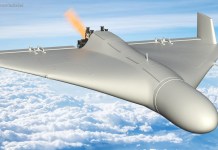The United States has again been caught in its F-35 dilemma. With its most expensive program in history, the American government has again decided to postpone the full-rate production and combat simulation to the next year, according to reports.
According to the initial estimates, the testing was due to take place in 2017, which, as we now know, was delayed to December 2020. This date has yet again been pushed further, due to difficulties in finishing required technical preparations. However, Lockheed Martin would continue with the current low-scale production.
The F-35 program office “currently estimates” that the new test delay “will not support a March 2021 date.” It is “preparing an updated project schedule based on measured progress to date,” said Jessica Maxwell, spokeswoman for Defense Department acquisition chief Ellen Lord, in a statement.

Even though the most rigorous combat testing hasn’t been completed, more than 435 in a planned fleet of more than 3,000 F-35s for the U.S. and allies already have been delivered as of this month.
The Marine Corps and Air Force have flown the jets in combat missions against Middle East targets — but only those that pose little or no air-to-air or air-defence threats.
Why the full-rate production?
With so many orders (for F-35s) from so many countries, the United States government has been under constant pressure to produce and deliver this stealth fighter jet.
Even when rigorous combat tests haven’t been performed or tested, Lockheed Martin has already delivered more than 430 completed airframes to the US and its allies, most notably Israel.
More than 3,000 F-35s are planned to be made, as a futuristic ‘standard’ to replace most mission-specific aircraft in the inventory. For the west, it could be their next F-16, in even wider use.
The full-rate production will ensure the timely delivery of this 5th-generation ‘flying computer’ and would be profitable for the company, and would be a seal of approval from the Defense Department to U.S. taxpayers and foreign customers that the fighter jet has been fully tested, deemed effective against the highest-level threats, can meet its maintenance goals and can be produced efficiently.
“We are confident the full F-35 enterprise is prepared for full-rate production and ready to meet growing customer demand,” Lockheed spokeswoman Carolyn Nelson said in an email.
She said the company has “delivered on all requirements” for the software needed by the Naval Air Systems Command, which will host the simulations, and is “providing our full support to ensure successful integration and testing as soon as possible,” reported industryweek.com.




